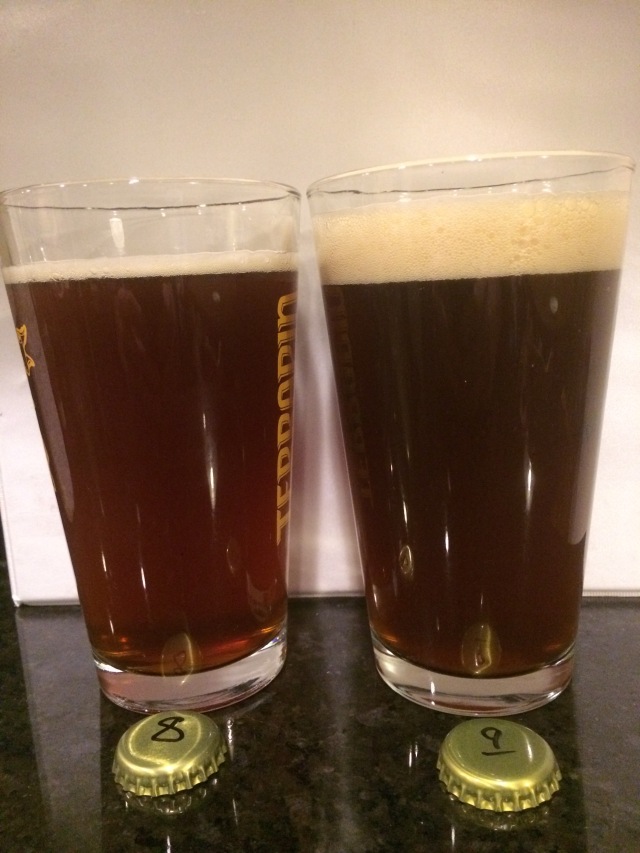This post is one in a series of making small adjustments to a single recipe in order to improve it, learn more about the impact each ingredient has on the finished product, and the art of recipe creation. The rest of the comparison tastings in this series can be found here.
Since beginning to compare and taste these beers blind, I’ve been glad to see that I’ve been correct about which beer is which every time. I had previously thought that each change, however seemingly small, had enough impact on the final product that it would be no problem telling these red IPAs apart, and that has proven to be true. What has been pleasantly surprising, though, has been the fact that my tasting notes align pretty well with other tasting notes I’ve taken when I was not blind to the beer I was drinking. While a single data point can’t confirm something entirely, it does provide some more support to my perception of these beers prior to these blind tastings (at least for Iterations 6-9).
Recap
The recipes for each beer are as follows:
Iteration 8
|
Iteration 9
|
Appearance
Iteration 8 poured with a moderate head that lingered for a while but didn’t take long to drop to a thin white foam. It was red, and was relatively clear—something that surprises me since I had previously watched all of my beers in this series fall victim to chill haze. This beer was no different in previous tastings, but for some reason this particular beer was clear directly from the fridge.
Iteration 9 poured with a respectable head that had excellent retention. This beer was dark red, possibly caused by extra haziness due to the much heavier dry hopping in this version.

Aroma
Iteration 8 had an aroma of Bing cherry, black plum, grapefruit, and a hint of pear.
Iteration 9 smelled strongly of orange rind (the white portion inside the peel—not the peel or zest) and orange flesh. Behind those flavors were notes of Bing cherry and black plum, which were also prevalent, but less so than the orange aromas.
Flavor
Iteration 8 had a strong and rich dark fruit flavor composed of plum and black cherry. Other flavors were secondary to those dark fruit notes, but this beer also had tasted of citrus, a slight herbal flavor, a hint of a floral note, and apricot.
Iteration 9 had some grassiness to it. Looking beyond that flavor, though, yielded rich black cherry and black plum flavors with a taste of orange flesh mixed in.
Final Thoughts
These beers were both good. While the hop flavor of Iteration 8 was starting to drop off, it was still present and the malt character had grown deep and rich. This is something I’ve noticed across other Iterations of this beer, and perhaps it’s the nature of a red IPA. The malt depth takes time to mature, but by the time it has reached its peak the hop aroma and flavor is fading. This makes it difficult to decide when this beer is truly at its best, since both elements make this beer what it is.
All that said, at the time of this tasting I had a slight preference for Iteration 9 if I looked past the grassy off-flavor and considered the other pieces of the beer. With the grassiness there, though, I enjoyed Iteration 8 a bit more. I suppose that means that I enjoyed the idea of Iteration 9—what it could have been if I’d dry hopped for less time or hadn’t used potentially old hops—more so than the beer itself.
